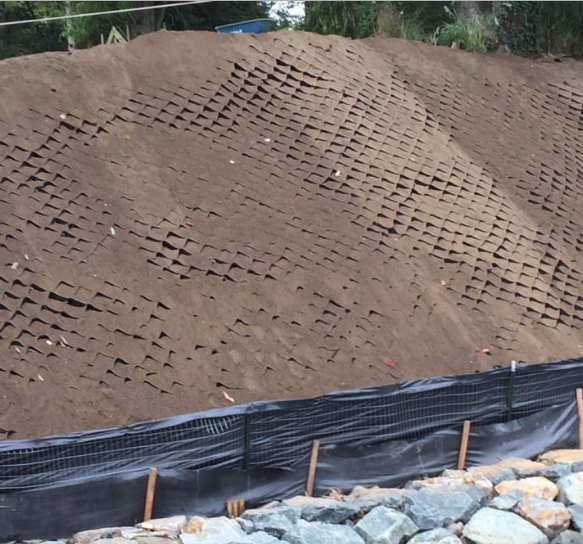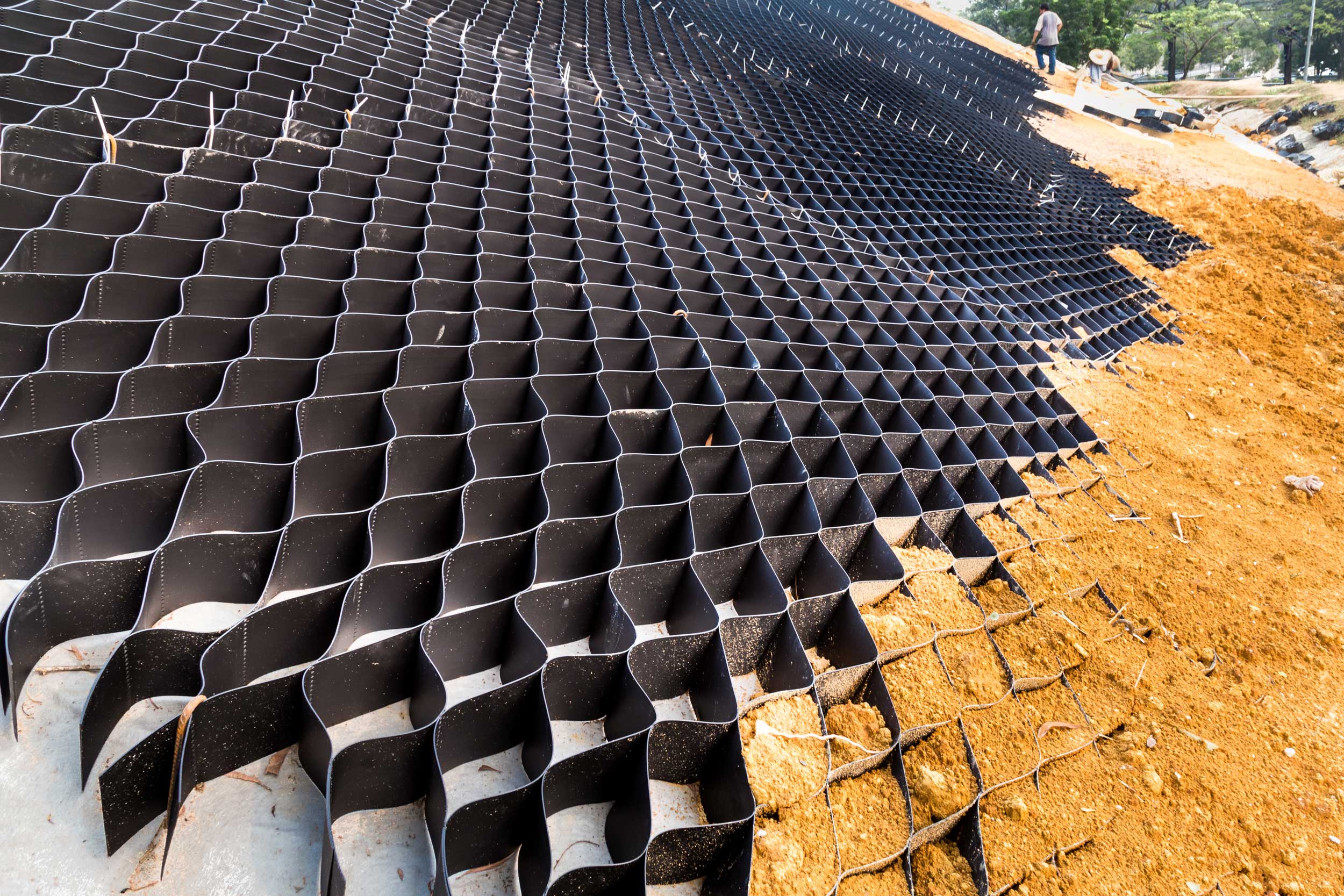Erosion Control Providers: Shielding the Setting
Wiki Article
Effective Disintegration Control Strategies for Lasting Land Management
Are you trying to find means to successfully handle erosion on your land? Look no more! This write-up will certainly provide you with valuable information on the significance of erosion control in sustainable land management. Discover the different types of erosion and their impact on your land, in addition to all-natural approaches to regulate disintegration. Find out exactly how to apply effective erosion control measures and ensure appropriate surveillance and upkeep. Start doing something about it today to protect and maintain your important land.Relevance of Disintegration Control in Lasting Land Monitoring
Because it aids prevent dirt deterioration and loss,Erosion control is essential for lasting land administration. By executing reliable erosion control strategies, you can make certain the long-term wellness and performance of your land. Without appropriate erosion control actions, dirt erosion can take place, resulting in the loss of useful topsoil that is abundant in nutrients required for plant development.One of the primary reasons disintegration control is vital is because it helps to maintain soil fertility. Furthermore, erosion can lead to sedimentation in close-by water bodies, which can adversely influence aquatic ecological communities.
One more secret advantage of disintegration control is the avoidance of land degradation. Erosion can trigger the loss of essential topsoil, which takes years to create naturally. This loss of topsoil can lead to barren and unproductive land, making it tough for plants to expand and for ecological communities to thrive. By implementing erosion control techniques such as terracing, contour plowing, and making use of cover crops, you can aid protect against land destruction and keep the wellness of your land.

Sorts Of Erosion and Their Impact on Land
Comprehending the different sorts of erosion and just how they affect the land can help you implement better land administration methods. Erosion is the process whereby soil, rocks, and other materials are progressively worn off and carried by all-natural forces such as water, wind, and ice. There are four main kinds of disintegration: sheet erosion, rill erosion, gully erosion, and mass motion erosion.When a slim layer of soil is removed evenly from the surface area of the land,Sheet erosion occurs. This kind of erosion is frequently caused by heavy rains or inappropriate land monitoring methods such as overgrazing or logging. Rill disintegration, on the various other hand, takes place when small channels or rivulets are based on the land as a result of the circulation of water. This can occur on high slopes or areas with compressed dirt.
Gully disintegration is much more severe and happens when larger gullies or networks are developed due to the continuous flow of water. Mass activity erosion refers to the movement of huge quantities of dirt and rocks downhill due to the pressure of gravity.
Recognizing these various kinds of erosion and their effect on the land is essential for reliable land management. By implementing erosion control methods such as terracing, contour plowing, and reforestation, you can minimize erosion and preserve the integrity of the land. Furthermore, exercising great land monitoring strategies like proper crop rotation, preserving ground cover, and utilizing debris control steps can additionally aid in protecting against erosion.
Natural Disintegration Control Methods for Sustainable Land Management
By executing natural disintegration control approaches, you can properly preserve the stability and handle of your land. One efficient method is making use of vegetation, such as turfs and plants, to support soil and stop disintegration. Growing indigenous types can aid raise origin thickness and bind the soil with each other, reducing the danger of erosion triggered by heavy rains or wind (silt fences). In addition, mulching is another all-natural technique that can aid regulate erosion. By using a layer of organic compost, such as timber chips or straw, you can secure the dirt from the effect of raindrops, lowering dirt compaction and like this runoff. An additional natural erosion control technique is contouring the land. By developing shape lines or terraces on inclines, you can decrease the circulation of water and allow it to pass through the dirt, lowering disintegration. In areas where erosion is a significant concern, mounting erosion control coverings or mats can be beneficial. These floor coverings are made of eco-friendly materials and aid stabilize the dirt up until vegetation is established. On the whole, by using these all-natural erosion control techniques, you can effectively handle and shield your land from erosion, ensuring its long-lasting sustainability.Carrying Out Reliable Disintegration Control Actions

One such method is the use of disintegration control coverings. Additionally, growing plant life is an important step in erosion control. By carrying out these confirmed disintegration control approaches, you can properly shield your land and lessen the risk of disintegration and its harmful effects.
Tracking and Maintenance of Disintegration Control Techniques
When surveillance and preserving erosion control actions, it is necessary to regularly evaluate the erosion control coverings, balconies, greenery, and debris control procedures to ensure they are functioning correctly and efficiently stopping disintegration (erosion control). By carrying out regular assessments, you can identify any kind of problems or shortages in the erosion control methods and take required activities to fix them
Start by inspecting the erosion control coverings. Look for indicators of damages or wear, such as rips or revealed dirt.
Inspect for indications of erosion, such as debris build-up or irregular surfaces. Guarantee that the balconies are properly made and preserved to draw away water circulation and reduce disintegration.
Evaluate the plant life in the erosion control area. Proper plant life insurance coverage aids maintain the soil and avoid erosion.
Last but not least, check the debris control measures, such as debris containers or sediment fences. Ensure they are properly mounted look at these guys and operating as planned. Eliminate any kind of built up sediment and make certain that the controls are properly preserved.
Regular surveillance and upkeep of disintegration control steps are essential for their long-lasting effectiveness in preventing disintegration and keeping lasting land administration practices.
Conclusion
In conclusion, you must focus on erosion control for lasting land monitoring. By understanding the various kinds of disintegration and their effect on the land, you can execute effective natural disintegration control techniques.Discover the various kinds of erosion and their impact on your land, as well as natural methods to control disintegration. There are 4 major types of erosion: sheet erosion, rill erosion, gully erosion, and mass activity disintegration.
By executing disintegration control strategies such as terracing, contour plowing, and reforestation, you can reduce disintegration and maintain the stability of the land (Memphis Erosion Control Solutions excavation). On you can find out more the whole, by making use of these all-natural erosion control approaches, you can properly take care of and secure your land from erosion, ensuring its lasting sustainability
By comprehending the different types of erosion and their impact on the land, you can execute reliable natural disintegration control techniques.
Report this wiki page